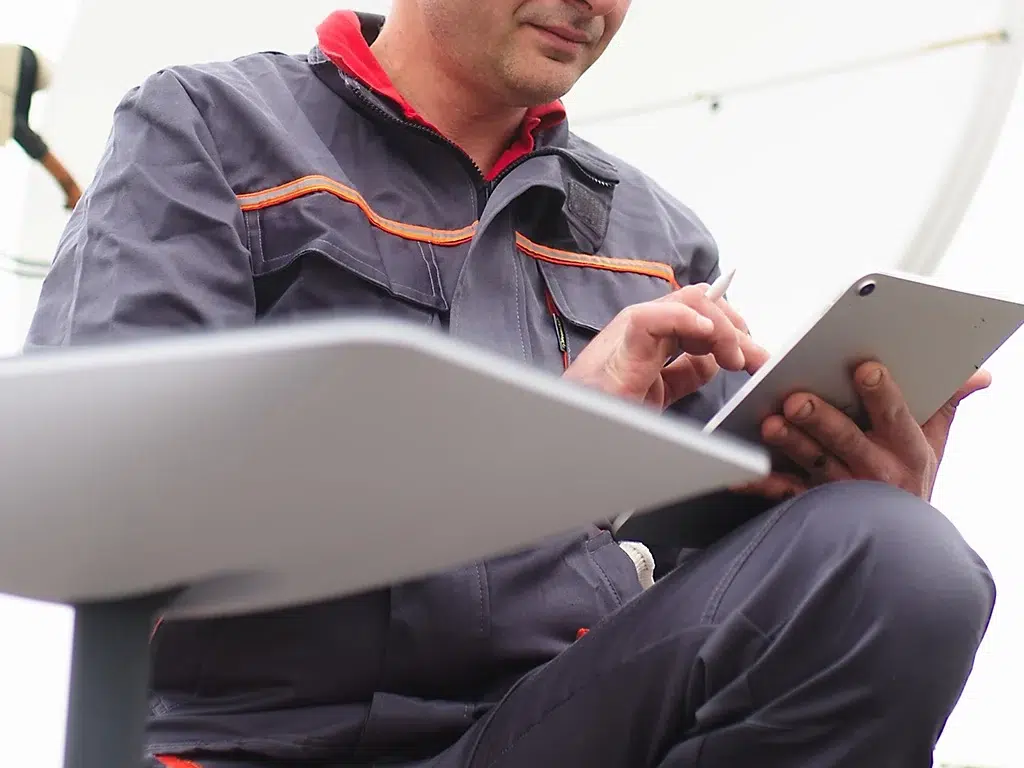
When you hear the term “mobile device,” what’s the first thing that pops into your head? Let me guess: your smartphone. The little gadget that’s practically glued to your hand, the one that wakes you up in the morning, delivers your daily dose of memes, and sometimes, just sometimes, lets you make a call.
But what if I told you that your trusty smartphone is just one slice of the giant mobile device pie? Yep, mobile ICT (Information and Communication Technology) is a much bigger buffet than you might think! Smartphones might be the superstars, but other devices also deserve the spotlight. Let’s take a stroll through the vast, surprising, and downright quirky world of mobile devices – all of which have more mobility than a caffeinated possum.
Laptops are the often-overlooked OG of mobile devices. Before smartphones were smart, and when tablets were still just a Star Trek fantasy, laptops were out there, letting us work and play on the go. Your laptop is a mobile device in every sense of the word—it folds, it fits in your backpack, and it can be hauled to a café so you can look trendy while sipping an overpriced latte.
Sure, it might not fit in your pocket, but the laptop is the unsung hero of mobile computing. Whether you’re hammering out reports, hooking in to that online meeting, or watching your latest self-training vid, your trusty laptop’s got your back. That’s why so many enterprises include laptops in their managed mobility services. And let’s not forget that moment of panic when it’s out of juice between customer meetings, and you’re desperately looking for a power outlet—just another reminder that it’s definitely a mobile device.

Ah, tablets—the awkward middle child between phones and laptops. Too big to fit in your pocket but not quite as bulky as your laptop, these magical slabs of glass and aluminium have found their place in our mobile world.
They’re perfect for when your phone screen feels too small to look at that construction plan while you’re on-site, but you don’t want to deal with the clunky weight of your laptop. Whether it’s for reading, drawing, or impressing people in the field with snazzy plans and photos, tablets are all about convenience. Plus, you can hold them up dramatically in public places, looking like you’re totally getting work done!
If laptops are the old-school cool and tablets are the new age hipsters, wearables are the minimalists of the mobile device world. Smartwatches and fitness trackers may not scream “I’m a productivity machine!” but they’re mobile devices nonetheless.
But for companies, wearables are so much more than that. Body-cams aren’t only for police any more. Look more closely at crane drivers on construction sites, security workers, even nurses in some areas, and you’ll see their tiny body-cams silently recording everything.
A bunch of other wearable stuff is out there too, from autonomous ear buds (no phone needed) that you wear all the time, to body-worn safety sensors to detect bad air in mining environments. It all connects and transmits, and it all needs management. And while they may never replace the laptop or the tablet, they sure are winning points in the cool, James Bond-gadget department.
Remember when we all thought Wi-Fi was so cool? Great internet, with no cords – yay! The only problem was that each Wi-Fi was tied to one place – home, office, café, wherever. Or often, there just wasn’t any at all.
Then along came networks that you can move around – the “pocket rockets” of mobile hotspots. Now there is so much more, with super-fancy mobile endpoints (on 5G and other modes) that deliver portable internet for hundreds or even thousands of users. They’re lightweight, they are used in temporary offices and worksites, and some even come with their own battery backups.

No, the fun doesn’t stop when you leave civilisation. Enter low-earth-orbit satellite internet, which lets you continue your adventures even when you’re out and about. Once thought to be niche devices for geeks, these portable units now sit on cars and boats all over the place, delivering high-speed internet to wherever you are, from the desert to the ocean.
Their ability to handle high-speed low-latency internet on the go makes them prime candidates for “mobile device” status. And let’s face it: nothing beats getting that critical plan from head office while you’re still on site, without having to schlep back to civilisation to pick it up.
Okay, IoT (Internet of Things) devices might not fit neatly into the “traditional” mobile device category, but hear me out. That smart thermostat, your doorbell camera, even your refrigerator—this is what most people think of. But IoT is also on the move, with chips inside vehicles, commercial equipment and much more. These are all connected to the internet, and count as part of the mobile ICT family.
The line between what counts as a mobile device and what doesn’t is blurring faster than ever. Anything that can connect, move, or operate remotely is edging closer to being classified as “mobile.” So don’t be surprised if your next coffee maker gets thrown into this mix!
Let’s not forget the health monitors—the unsung heroes of mobile devices, especially in today’s health-conscious world. Whether it’s for managing a chronic condition, tracking a remote patient’s vitals, or just keeping an eye on fitness, health monitors are here to help. Devices like portable ECG monitors, blood pressure cuffs, pulse oximeters, and glucose meters have become essential tools for many health organisations, and yes, they’re mobile too!
These handy little gadgets pack a lot of power into a small package, giving real-time health data right at your fingertips. Your clinician can track everything from heart rate to oxygen levels all from far away. Many sync with a tablet or even transmit by themselves, so if you’re the patient you can impress your doctor with your commitment to self-care, even when you’re far away!
By now, it should be clear: a mobile device isn’t just the phone in your hand (though, let’s be honest, that one’s pretty cool). It’s anything that can move with you, keep you connected, and keep you productive — and safe —no matter where you are.
Of course, none of this stuff is free. And it’s not just the dollars involved – they can all suck up your time in ordering them, setting them up properly, and keeping them going and updated. For one person that’s a big task already, but spare a thought for big companies who have to manage thousands or tens of thousands of mobile ICT devices. That’s why so many organisations outsource the management of all their mobile devices to a specialist company who looks after it all.
Whether you’re checking emails on your laptop, reviewing a plan on your tablet, recording a security interaction on your body-cam, or laying down a Wi-Fi network in the middle of nowhere, all these gadgets are part of the ever-expanding mobile ICT ecosystem. And with the way things are going, tomorrow’s mobile device might just be a screenless laptop, or the clothes you wear or the spatial computing glasses on your face.
So next time someone says “mobile device,” give them a knowing look and remind them: it’s not just phones anymore. It’s a whole techy, mobile world out there!